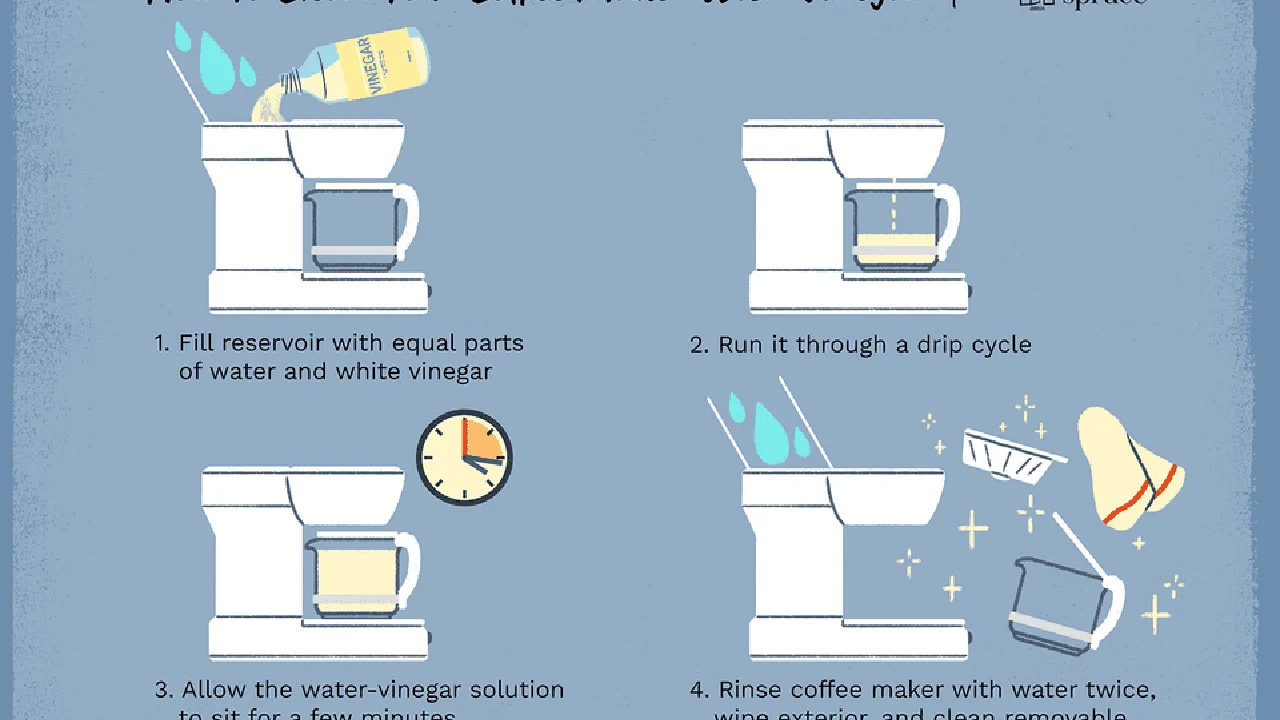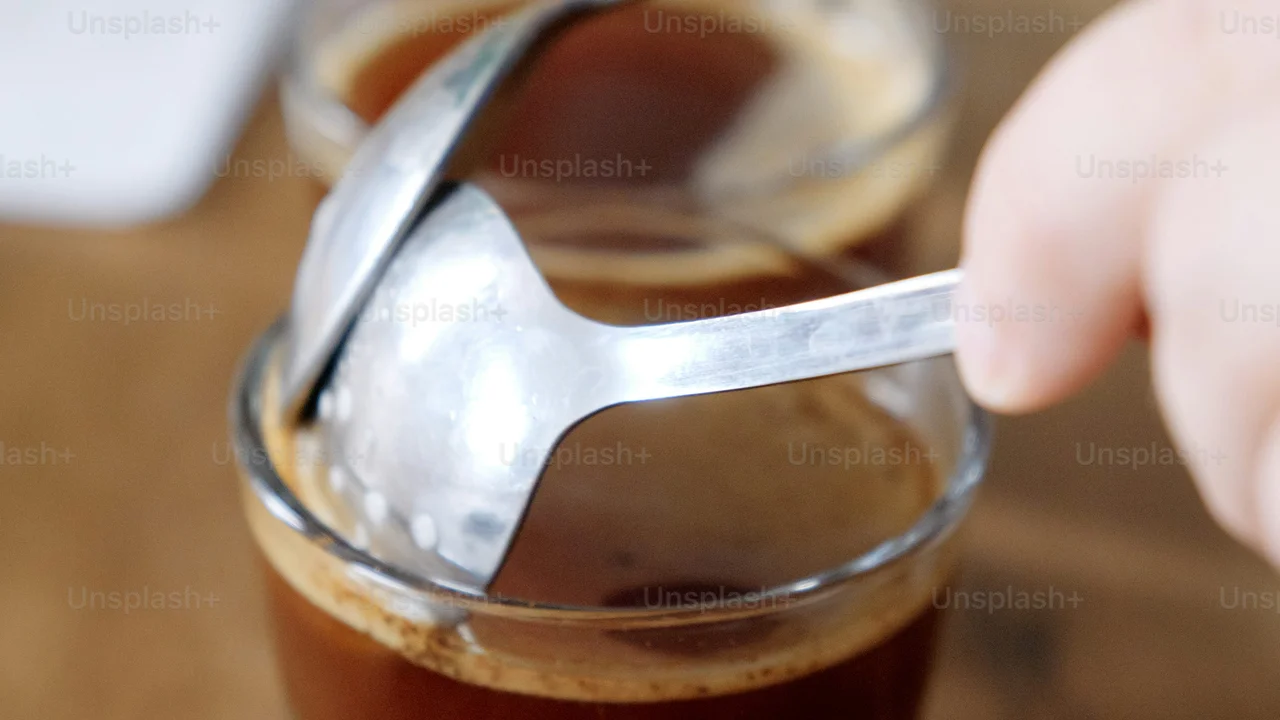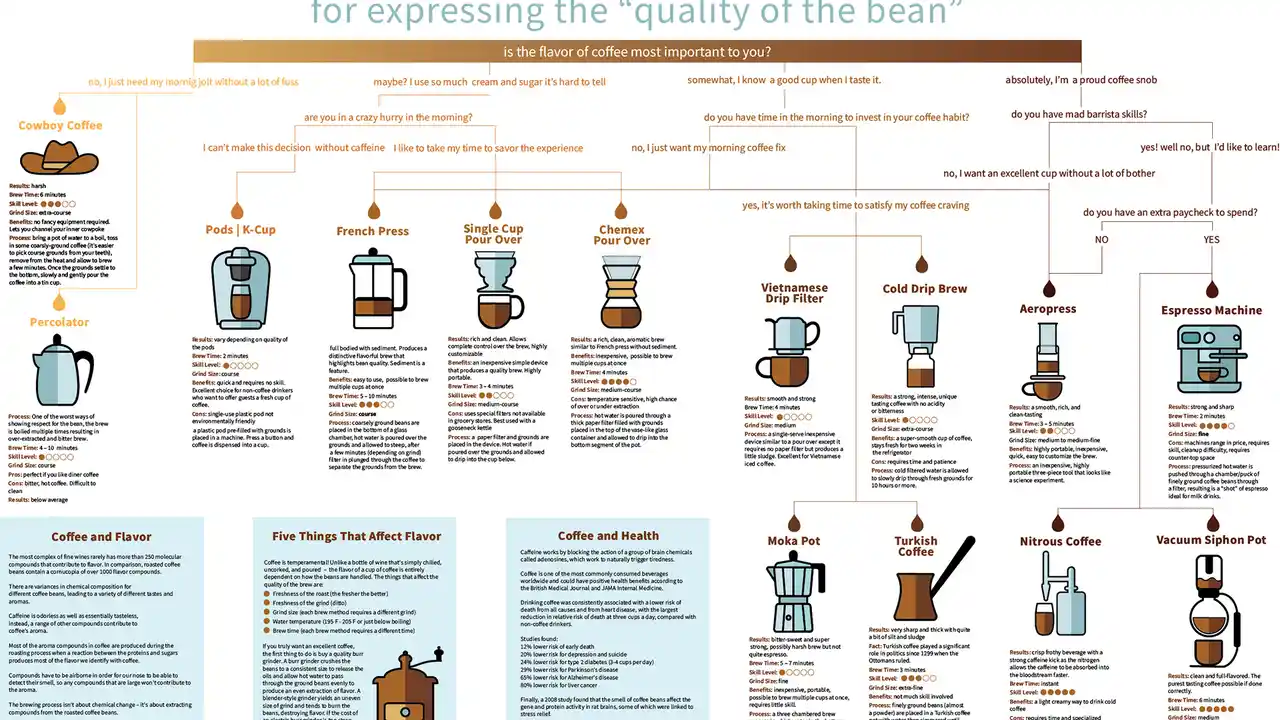How to Clean Your Coffee Maker: A Step-by-Step Guide
Keep your coffee maker clean for optimal performance and taste This step-by-step guide shows you how to descale and clean your machine Extend the life of your coffee maker

Why Cleaning Your Coffee Maker is Crucial Coffee Maker Cleaning Importance
Let's face it, your coffee maker works hard. Day in and day out, it churns out your daily dose of caffeine. But just like any appliance, it needs a little TLC. Ignoring regular cleaning can lead to a build-up of mineral deposits (scale), stale coffee oils, and even mold or bacteria. Yuck! This not only affects the taste of your coffee, making it bitter and unpleasant, but it can also shorten the lifespan of your machine. Think of it as preventative maintenance for your beloved coffee ritual.
Identifying the Signs Your Coffee Maker Needs Cleaning Coffee Maker Cleaning Signs
Not sure if your coffee maker needs a good scrub? Here are a few telltale signs:
- Slow Brewing: If your coffee maker is taking longer than usual to brew a pot, it's a good indication that mineral build-up is restricting water flow.
- Bitter or Sour Taste: Stale coffee oils and mineral deposits can impart a bitter or sour taste to your coffee, even if you're using fresh beans.
- Visible Mineral Deposits: Look for white or chalky deposits inside the water reservoir, carafe, or spray head.
- Unpleasant Odor: A funky smell coming from your coffee maker is a sure sign that it needs a deep clean.
- Inconsistent Brewing Temperature: Scale build-up can affect the heating element's ability to maintain a consistent brewing temperature.
Gathering Your Cleaning Supplies Coffee Maker Cleaning Supplies
Before you start, gather your cleaning supplies. You probably already have most of these on hand:
- White Vinegar: A natural and effective descaling agent.
- Water: Filtered water is best.
- Dish Soap: For general cleaning.
- Soft Cloth or Sponge: For wiping down surfaces.
- Small Brush or Toothbrush: For scrubbing hard-to-reach areas.
- Paper Filters: For rinsing the coffee maker.
- Descaling Solution (Optional): If you prefer a commercial descaling solution, follow the manufacturer's instructions. We'll cover some good ones later!
Step-by-Step Guide to Cleaning Your Drip Coffee Maker Drip Coffee Maker Cleaning Steps
Here's a simple step-by-step guide to cleaning your drip coffee maker:
- Empty the Coffee Maker: Remove the carafe, filter basket, and any coffee grounds.
- Prepare the Cleaning Solution: Mix equal parts white vinegar and water in the water reservoir. For a heavily scaled coffee maker, you can use a stronger vinegar solution (e.g., 2 parts vinegar to 1 part water).
- Run a Brewing Cycle: Place a paper filter in the filter basket and run a full brewing cycle with the vinegar solution.
- Pause and Soak (Optional): Halfway through the brewing cycle, pause the coffee maker and let the vinegar solution sit in the carafe for about 30 minutes. This allows the vinegar to loosen stubborn mineral deposits.
- Complete the Brewing Cycle: Resume the brewing cycle and let the remaining vinegar solution run through the coffee maker.
- Rinse with Water: Remove the vinegar-soaked filter and fill the water reservoir with fresh, filtered water. Run two to three full brewing cycles with water only to rinse away any remaining vinegar.
- Wash Removable Parts: Wash the carafe, filter basket, and any other removable parts with warm, soapy water. Rinse thoroughly and allow them to air dry.
- Wipe Down the Exterior: Wipe down the exterior of the coffee maker with a damp cloth.
Cleaning Other Types of Coffee Makers Cleaning Different Coffee Makers
The basic principles of cleaning apply to most coffee makers, but here are some specific tips for other types:
French Press Cleaning French Press Maintenance
Disassemble the French press and wash all parts with warm, soapy water. Pay special attention to cleaning the mesh filter screen. Use a brush to remove any coffee grounds that may be trapped. Rinse thoroughly and allow to air dry. Avoid abrasive cleaners, as they can damage the finish.
Pour Over Coffee Maker Cleaning Pour Over Care
Rinse the pour-over dripper with warm water after each use. Occasionally, wash it with warm, soapy water. For stubborn stains, soak it in a solution of water and baking soda. Rinse thoroughly and allow to air dry.
Espresso Machine Cleaning Espresso Machine Maintenance
Espresso machines require more frequent cleaning due to the build-up of coffee oils and mineral deposits. Follow the manufacturer's instructions for descaling and backflushing. Regularly clean the portafilter and group head with a brush. Wipe down the steam wand after each use.
Single-Serve Coffee Maker Cleaning Single-Serve Machine Care
Descale your single-serve coffee maker according to the manufacturer's instructions. Regularly clean the water reservoir and drip tray. Some single-serve coffee makers have a cleaning cycle that you can run using a descaling solution.
Recommended Descaling Solutions and Products Best Coffee Maker Cleaning Products
While vinegar is a great natural option, here are a few commercial descaling solutions that get excellent reviews:
- Keurig Descaling Solution: Specifically designed for Keurig machines, this solution effectively removes mineral build-up without damaging the machine.
- Dezcal Coffee and Espresso Machine Descaler: A biodegradable and phosphate-free descaler that's safe for all types of coffee makers and espresso machines.
- Essential Values Universal Descaling Solution: A budget-friendly option that's effective for descaling coffee makers, espresso machines, and kettles.
Specific Product Recommendations and Usage Scenarios Coffee Maker Cleaning Products
Let's dive into some specific product recommendations, usage scenarios, and price points:
Keurig Descaling Solution
- Usage Scenario: Ideal for regular maintenance of Keurig single-serve coffee makers. Prevents scale build-up and ensures optimal brewing performance.
- How to Use: Follow the instructions on the bottle. Typically involves emptying the water reservoir, adding the descaling solution, running a brewing cycle, and then rinsing with fresh water.
- Price: Around $10-$15 per bottle (good for 2-3 descaling cycles).
- Pros: Specifically formulated for Keurig machines, easy to use, effective descaling.
- Cons: Only suitable for Keurig machines, may be more expensive than generic descalers.
Dezcal Coffee and Espresso Machine Descaler
- Usage Scenario: Suitable for all types of coffee makers and espresso machines. Excellent for removing stubborn mineral deposits and coffee oils.
- How to Use: Dissolve the recommended amount of Dezcal in water and pour into the water reservoir. Run a brewing cycle, pause for 30 minutes, and then complete the cycle. Rinse thoroughly with fresh water.
- Price: Around $15-$20 per bottle (good for multiple descaling cycles).
- Pros: Biodegradable, phosphate-free, effective on all types of machines.
- Cons: May require more rinsing than some other descalers.
Essential Values Universal Descaling Solution
- Usage Scenario: A budget-friendly option for descaling coffee makers, espresso machines, and kettles. Good for general maintenance and light descaling.
- How to Use: Follow the instructions on the bottle. Typically involves mixing the solution with water, running a brewing cycle, and then rinsing with fresh water.
- Price: Around $8-$12 per bottle (good for multiple descaling cycles).
- Pros: Affordable, versatile, easy to use.
- Cons: May not be as effective on heavily scaled machines as some other descalers.
Comparing Descaling Solutions Choosing the Right Cleaner
Here's a quick comparison table to help you choose the right descaling solution:
| Product | Suitable For | Price | Pros | Cons |
|---|---|---|---|---|
| Keurig Descaling Solution | Keurig Machines | $10-$15 | Specifically formulated for Keurig, easy to use | Only for Keurig machines, may be pricier |
| Dezcal | All Coffee Makers & Espresso Machines | $15-$20 | Biodegradable, effective on all machines | May require more rinsing |
| Essential Values | All Coffee Makers & Kettles | $8-$12 | Affordable, versatile | May not be as effective on heavy scale |
Tips for Preventing Scale Build-Up Coffee Maker Maintenance Tips
Prevention is always better than cure! Here are a few tips to help prevent scale build-up in your coffee maker:
- Use Filtered Water: Filtered water contains fewer minerals than tap water, reducing the risk of scale build-up.
- Descale Regularly: Descale your coffee maker every 1-3 months, depending on how often you use it and the hardness of your water.
- Empty and Rinse After Each Use: Empty the carafe and rinse the water reservoir after each use to prevent stale coffee oils from building up.
The Impact of Cleanliness on Coffee Taste Coffee Quality and Cleaning
Trust me, a clean coffee maker makes a world of difference to the taste of your coffee. By following these simple cleaning steps, you can ensure that your coffee maker is always in top condition and that you're enjoying the best possible cup of coffee every time. So, grab your vinegar, your brush, and get cleaning! Your taste buds will thank you.
:max_bytes(150000):strip_icc()/277019-baked-pork-chops-with-cream-of-mushroom-soup-DDMFS-beauty-4x3-BG-7505-5762b731cf30447d9cbbbbbf387beafa.jpg)






